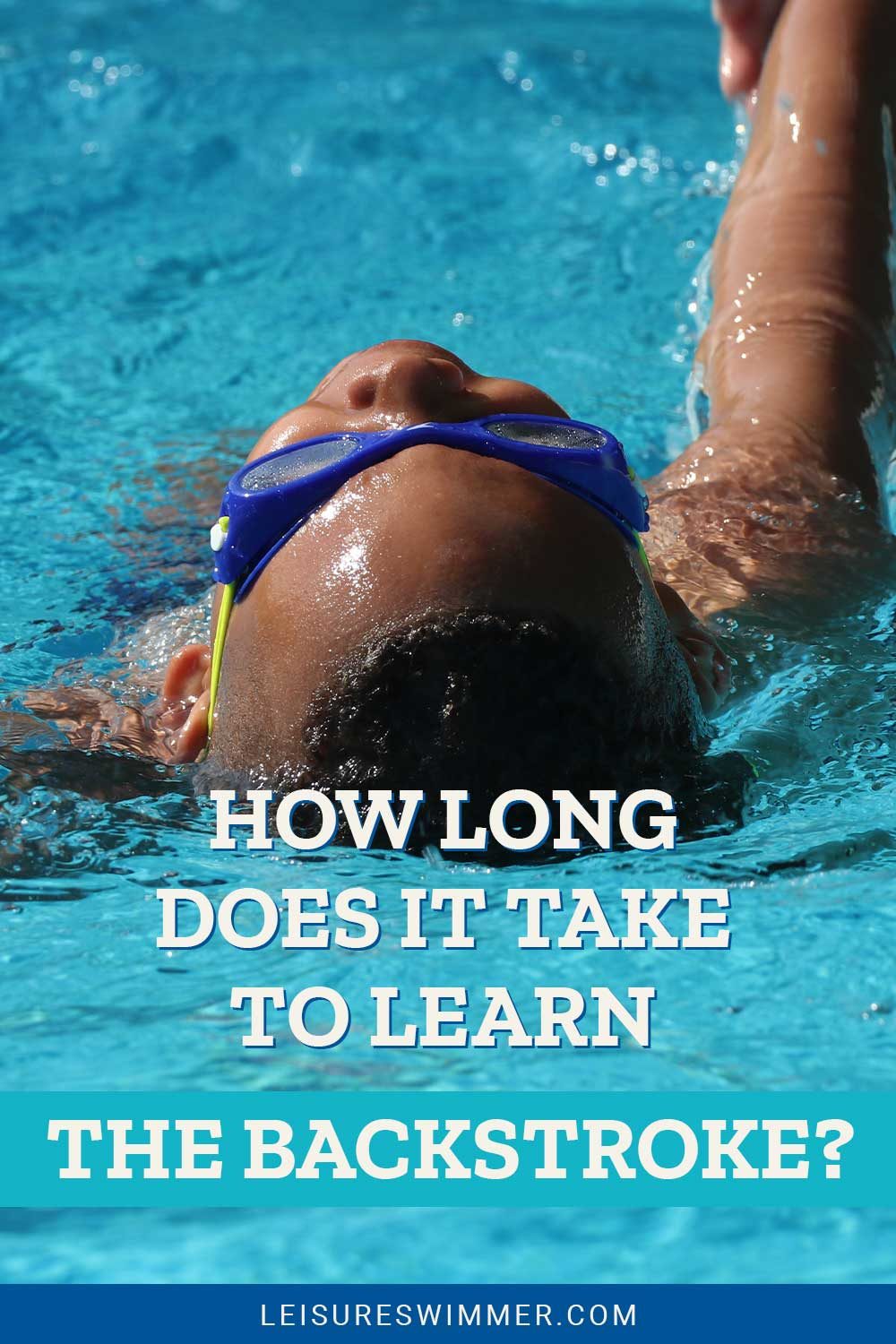How Long Does It Take To Learn The Backstroke?
We may earn commissions for purchases made through links on our site. Learn more on our about us page.
There are going to be some instances in which young children are natural swimmers, and teaching them techniques is easy, taking them little to no time to learn, even the backstroke.
However, not all people would naturally pick up this skill that easily, which will take a few lessons and even some years before the confidence matches the ability.
The average adult learning to swim will want to take around twenty hours of lessons over the time of a couple of months even to learn the basic techniques. Then, add another five to ten hours to incorporate the leaning of the backstroke.

How Should You Start?
One technique that has taught many students how to swim the backstroke includes having a person help you stay elevated in the pool by aiding the swimmer with form.
Just like with bicycles, there will be a point where the trainer will let go without the students’ knowledge allowing them to swim freely and without training wheels.
If learning solo, try working on floating on your back, keeping it straight like a plank, and just keeping yourself above the water enough to breathe comfortably. Use the sides of the pool, at first, to help you get used to being semi-inverted.

Which Exercises will Help You?
This may seem contrary, but workouts on dry land will help a person who is nervous about getting into the pool. In addition, professional Olympians will complete these workouts regularly to build muscle sets beneficial to a competitive swimmer.
Once in the pool, use flutter kick drills, which allow a student to hold the side of the pool and then swim kick to lift themselves parallel to the bottom of the ceiling.
This essential first step will provide the best practice for beginners allowing for the ‘simulated’ feeling of swimming inverted. Progressing to one arm stroke, returning to the wall, two alternating arm strokes, returning to the wall, and so forth.
Is there any Swimming Equipment that can Help You?
There are going to be certain sets of weights that will help build up muscles that will provide strength for pulling oneself through the water.
In addition, the variety of machines, resistance bands, alternative movement workouts, and medicine balls will create strength in the areas needed to improve in the water.
Remember the cardiovascular portion of working out; stationary equipment can simulate endurance tests to build upon this portion of bodily health. No matter the competition, or sport, being in top cardiovascular health is a cornerstone of any improvement in athletics.
Tips for a Better Backstroke
There is the old mantra of practice, practice, practice, which means that an athlete willing to put in the work and develop their craft can master it with this sort of effort.
Meaning to achieve a better backstroke takes getting into the pool as much as possible and working on form and technique.
As mentioned before, the flutter kicks exercise is used to straighten out your kicking patterns for better lines in the pool. The last tip, find a spot on the ceiling and draw a straight line to follow from one end of the pool to the other.
Common Mistakes you Need to Avoid
The biggest mistake that is made by those learning the backstroke is to not keep their back straight in the water. This causes the body to drag, in effect, pulling the person into the water and causing them to lose their balance atop the pool.
Another common mistake is dipping one’s head under the water, which occurs when pushing oneself and losing focus on the head position.
The main benefit of the backstroke is the constant stream of oxygen available, utilize this and focus on keeping your head above water to avoid making this mistake.
Final Thoughts on How long does it take to Learn the Backstroke
The backstroke is a versatile technique, perfect for survival situations to maintain a constant stream of air for the swimmer or injured parties involved. It is also a very casual stroke that will be for those wanting to stay healthy and fit.
Remember, those professionals and Olympians you see on the screen have been perfecting their techniques for a lifetime and to expect yourself to perform at that level is unnecessary.
The average backstroke lap will be two minutes per 100m lap; think that half of the world’s population cannot even accomplish this feat, and you’ll find confidence in yourself.


